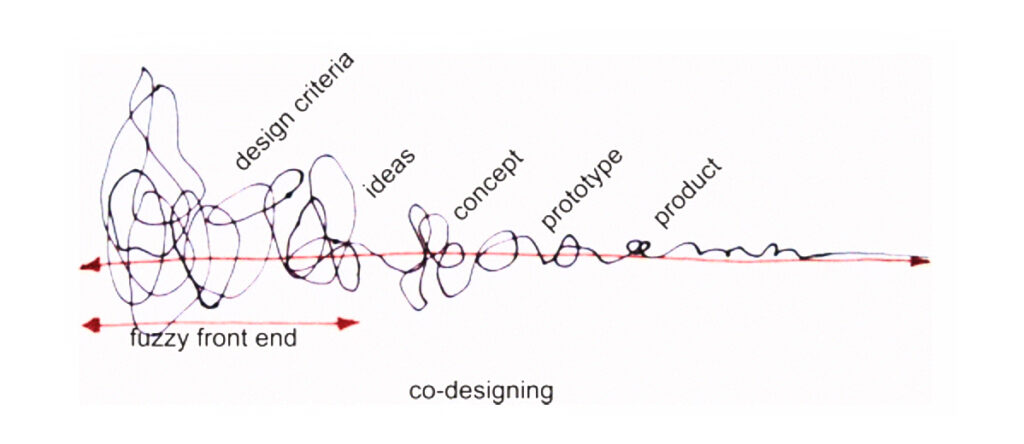Send invitations to participants



In order to identify the right people to participate, it is important to link the objective of your codesign session to the participants’ areas of expertise and goals. When selecting attendees, look for those who have a deep understanding of the challenges in question, and/or ideally are involved or connected with it on a daily basis. They will be better equipped to give unique insights and perspectives. Codesign processes offer a space for co-creation and collaboration beyond difference. Actually, differences can fuel design processes and might offer a rich environment for coming up with the most innovative solutions. That is why we suggest that you include people with different perspectives to foster an inclusive environment and allow for different ideas to flourish. It can also be helpful to include people who are functionally diverse but have similar or relevant experience from other sectors.
Approaching participants with an invitation to a co-design session for the first time might be a little bit “out of this world” experience (meaning: confusing, too vague, not appealing). Make sure to pick up your participants and adapt to their know-how around co-design. Include a short explanation of the process in your first email invitation and make sure to be available for further consultations or explanations.
Reminder:
In Chapter 4, we lightly touched upon this topic too – here is what we suggested there:
How to ensure participation by people affected by the challenge
Examples of email invitations for a codesign can be found here:
 Read more
Read more

In inviting different stakeholders I have faced the challenge of engaging different partners and CSOs in codesign who are questioning what their role will be after the solution is designed. How to manage competition and ownership among the CSOs sector? If there is money involved: be clear from the very start, who gets access to it, whose ideas are implemented etc. The challenge is observed in different contexts and highlighting empathy and the big picture is really important. Clarifying roles is important from the very beginning
Host participant orientation meeting


When your participants have never heard of co-design or design thinking (which is totally fine!), the time for another special “spell” has come 🙂
Orientation meetings should take place 2 weeks ahead of the codesign event/sessions. Your participant should join only if they need to. We recommend that this event is happening online, so you could record the meeting and then send it to other participants as well.
During the orientation meeting, you will provide an overview of the structure of the codesign as well as specific details regarding the sessions, tools and methods used. In this meeting, you will have the chance to get to know your participants better and understand their interest in design thinking or the focus topic. Participants will also cherish the chance to meet each other before hand.
The participation in the orientation meeting is not mandatory.
In case you are hosting a virtual co-design, make sure to use the orientation meeting for going through all the tools you will use and test the experience of your participants ahead of the main event.

